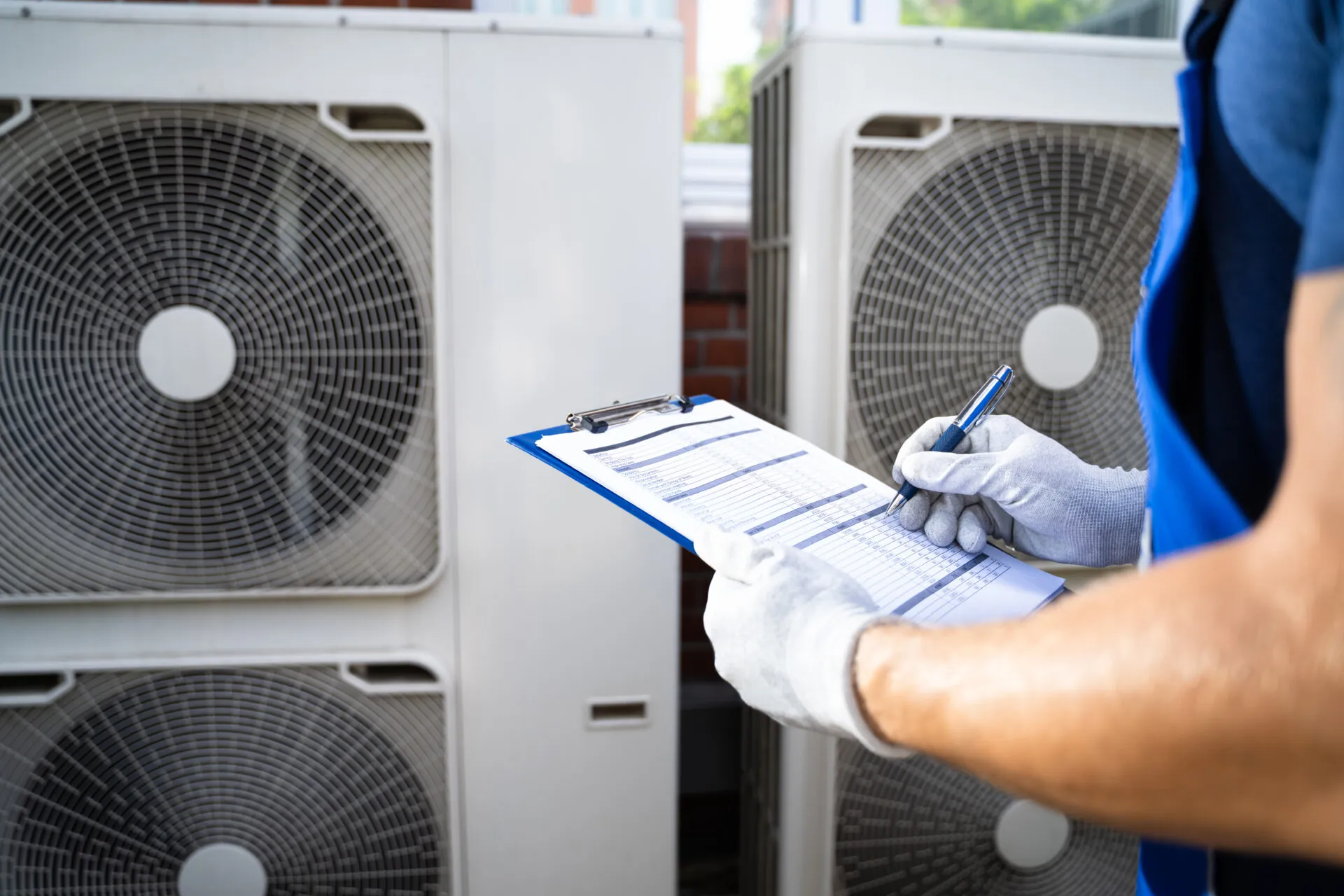
Using Indoor Air Quality Monitors for HVAC Fault Detection
Ensuring optimal indoor air quality (IAQ) in buildings is essential for maintaining a comfortable and effective work environment.
Poor IAQ levels can lead to a range of issues for employees, impacting comfort, productivity, and well-being. One effective way to improve indoor air quality and ensure the efficient operation of HVAC systems is through the use of indoor air quality monitors.
At R-Zero, we produce a RESET-certified IAQ monitor that is designed specifically for B2B environments. Indoor air quality monitors are essential tools for continuously measuring the parameters that affect the quality of the air inside buildings.
Here’s how monitors can play a crucial role in building maintenance.
HVAC Fault Detection
One of the critical applications of IAQ monitors is in commercial HVAC maintenance. Here’s how they contribute to detecting faults in HVAC systems .
Identifying Ventilation Issues:
IAQ monitors can detect elevated CO2 levels, indicating that the HVAC system is not providing adequate ventilation. This could be due to blocked air ducts, faulty fans, or incorrect system settings.
Monitoring Temperature and Humidity:
Fluctuations in temperature and humidity levels can point to issues with the HVAC system’s heating, cooling, or humidification functions. Consistent monitoring helps identify and address these issues promptly, before issues become widespread.
Detecting VOCs and Particulate Matter:
An increase in VOCs or particulate matter can indicate a problem with the HVAC filters or the introduction of pollutants from external sources. IAQ monitors can trigger maintenance checks to replace filters or help identify the pollutant source.
Real-time Alerts and Data Logging:
Advanced IAQ monitors provide real-time data and alerts. Building managers can receive instant notifications when IAQ parameters exceed acceptable levels, allowing for immediate investigation and resolution of potential HVAC faults.
Benefits of Using IAQ Monitors for HVAC Maintenance
Implementing indoor air quality monitors for HVAC fault detection offers several benefits:
Energy Efficiency:
Identifying and rectifying HVAC faults promptly can lead to significant energy savings. Efficient HVAC systems consume less energy, reducing operational costs.
Improved Employee Productivity:
By maintaining optimal air quality, employees are less likely to suffer from comfort issues related to poor IAQ, resulting in higher productivity.
Enhanced Facility Management:
Real-time data and historical trends provided by IAQ monitors enable facility managers to make informed decisions about HVAC maintenance and upgrades.
How to Improve Indoor Air Quality When Levels are Poor
Here are some strategies on how to improve indoor air quality in corporate office buildings if your monitor reports poor air quality levels:
Regular HVAC Maintenance:
Schedule regular maintenance checks to ensure that all components of the HVAC system are functioning correctly.
Use High-Efficiency Filtration:
Investing in advanced filtration technology is one of the most effective ways to improve indoor air quality without driving up energy consumption. High-efficiency filters, like those utilizing R-Zero’s Active Particle Control (APC) technology, go beyond conventional filtration methods by capturing and neutralizing ultra-fine particles that would otherwise pass through standard filters, including VOCs, bacteria, viruses, and particulate matter. These filters minimize energy consumption by maintaining airflow efficiency, reducing the strain on HVAC units. They also last 2-3 times longer than conventional filters.
Ensure Adequate Ventilation:
Ensure that the HVAC system provides enough fresh air to dilute indoor pollutants and maintain healthy CO2 levels. Anything higher than 1000ppm will have adverse effects on occupants.
Implement Green Cleaning Practices:
Use eco-friendly cleaning products that emit fewer VOCs and reduce indoor pollution.
Monitor and Adjust Humidity Levels:
Maintain indoor humidity levels between 30-50% to prevent mold growth and reduce respiratory discomfort.
For more insights on how monitoring IAQ and IEQ can feed into a smart building strategy, check out R-Zero’s Q3 Building Intelligence Index: The Business Case for Comfort.
More posts you might like
-

How to Pilot SecureAire Filters
A Step-by-Step Guide for Facilities Teams Cut HVAC energy use, extend filter life, and improve indoor air quality—without disrupting operations. Piloting R-Zero’s SecureAire filters is a smart move for facilities teams seeking to enhance HVAC performance and air quality while achieving energy savings. This guide walks you through how to plan and execute a data-driven […]
-

Smarter ventilation, lower cost: a guide to reducing HVAC energy without disruption
This guide is for energy leads and operations teams evaluating R-Zero. It outlines how our platform delivers measurable HVAC energy savings—not through expensive capital upgrades or disruptive equipment replacements, but by intelligently reducing airflow where it’s not needed and improving the efficiency of air movement through smarter filtration. Static schedules vs CO₂ vs occupancy-driven control […]
-

The Energy Efficiency FAQ: Clear Answers to Common Questions About Smarter Buildings
When people first learn about R-Zero’s platform, they often have smart, valid questions, and a few common concerns. Some are based on past experiences with other systems. Others come from how building operations used to work. This FAQ is here to give you clear, straightforward answers. Just helpful context on how R-Zero fits into your […]

